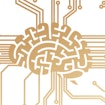Autism spectrum disorders (ASDs) comprise a constellation of symptoms, including impaired social interactions, communication and language deficits, and repetitive behaviors that manifest during early development. Various genetic targets associated with ASDs have been identified, but given the spectrum of symptoms, it has become clear that multiple genes play a part in the disorder. Dysfunction of cortical connectivity is thought to be a hallmark of ASDs, and many of the genes implicated in ASD are involved in synapse formation and function. Although many recent studies have investigated synaptic connections in ASD, the underlying mechanisms are still unknown.


